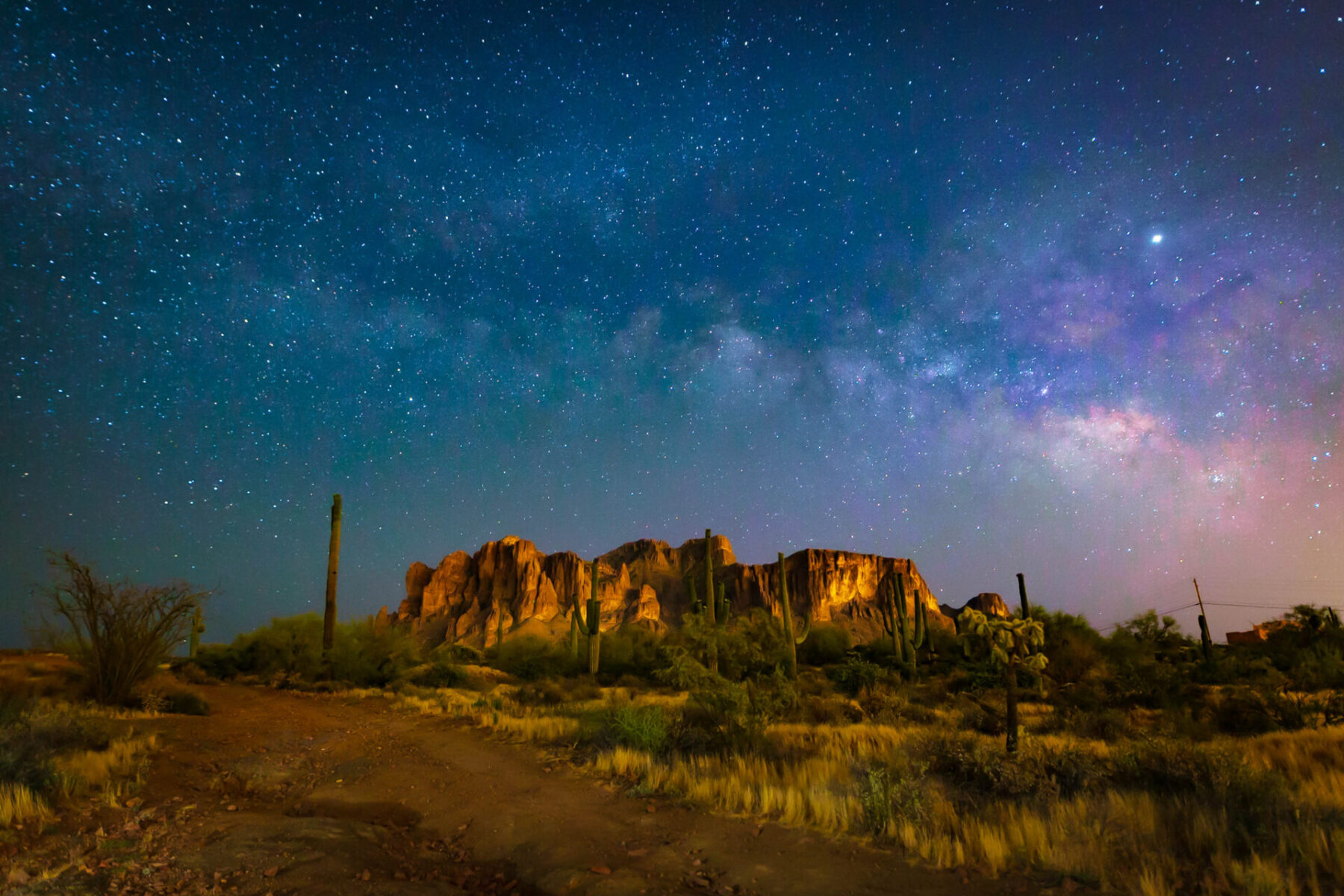Superstition--East Valley

Next to the Grand Canyon, the Superstition Mountains are the most photographed and painted landscape of Arizona. Surrounded by the natural beauty of the desert and filled with history, the East Valley of metro-Phoenix crown jewel is the Superstition Mountains. Federally designated as the Superstition Wilderness Area, this mountain range provides for a wonderful place to hike or horseback, take a photo expedition search for petroglyphs or maybe even go rock climbing!
Speaking of jewels…ok, more like jewelry, GOLD specifically, was the big draw to this beautiful area and the mining of it brought many fortune-seekers back in the 1800s. This mountain range took the name of Superstition from the local farmers (after “Crooked Top” and “Thunder Mountain” failed to stick) due to the folklore of the Pima Indians who told tales of the strange goings-on of the region.
Now in development, The Havenly Superstition will bring another gem to the area…and you won’t get lost trying to find this treasure as it will be conveniently located near the Apache Junction Town Center.
Apache Junction
The town of Apache Junction has a colorful history. From its early start as an old west mining camp, its convergence of Native American cultures, Spanish conquistadors, and, of course, the Lost Dutchman’s Gold Mine* legend. The Apache Trail that extends from Canyon Lake and the junction of an old stagecoach stop at Tortilla Flats is where the town got its name.
This town is friendly and welcoming with a small-town vibe and local businesses that are inviting and reasonably priced. Quiet, calm environments and gorgeous vistas give you plenty of peaceful space. Easy access to metropolitan areas for bigger shopping and entertainment brings the best of both worlds.
Things to do in Apache Junction
- Horseback Riding—That old west vibe is still a big part of the charm of this area with several stables available for horseback riding
- Boating and Fishing—With Canyon Lake and Saguaro Lake less than 30 minutes away and an hour further north Roosevelt Lake, day trips and weekend fishing excursions will have you hooked on these Arizona lakes. Click Here for a great resource and more information.
- Hiking—The Arizona desert mountain trails provide picturesque and diverse terrain suitable for novice hikers as well as those who desire more challenge. There are several different trails that are also great for wildlife spotting and enjoying the native plants
- Geocaching and Earthcaching opportunities also abound, check out the state parks’ website for link to download and go explore
How close is Apache Junction to…
Phoenix-Mesa Gateway Airport is approximately 14 miles from Apache Junction; 30 miles from Phoenix Sky Harbor International Airport
Mesa city center is a 20-minute drive; Chandler and Phoenix are only 30 minutes away
Ready to hit the casinos? Popular casinos are 20 to 30 minutes away. With great options like Fort McDowell We-ko-Pa Casino, 18 miles away, and Casino Arizona and Gila River Casino approx. 25 miles away.




